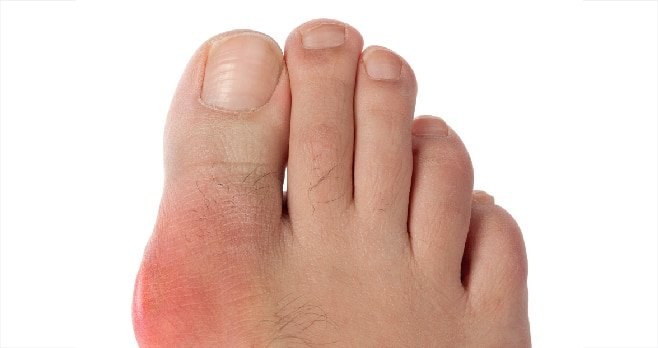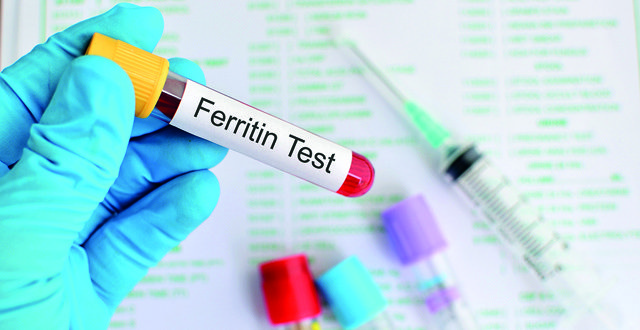Asthma is a chronic inflammatory disease of the airways. The term ‘asthma’ was first used by Hippocrates (400 BC) to describe panting and respiratory distress. He was possibly the first physician to observe the relationship between environment and respiratory diseases. The smoking of Stramonium, a herb that is an anticholinergic agent related to ipratropium and tiotropium, was first introduced in India by Alexander the Great as an airway relaxant. Pliny the elder (23-79 AD), a Roman author who was thought to suffer from asthma himself observed pollen as a source of respiratory distress and recommended the use of “ephedra” (forerunner of ephedrine) in red wine as an asthma remedy.
<h3 class=”subheadMIstyles”>The burden of asthma</h3>
Modern medicine has come a long way in understanding the pathophysiology and treatment of asthma since these ancient civilisations. Today, Ireland has one of the highest rates of asthma-prevalence globally. The annual mortality rate from asthma in Ireland was estimated at 62 deaths per annum in the year 2011, with approximately 20,000 and 50,000 attendances to emergency departments and general practice services respectively.
Asthma, if effectively treated will allow patients to live a near normal life, hence improving productivity and minimising the financial burden of this disease.
<h3 class=”subheadMIstyles”>GINA guidelines</h3>
The Global Initiative for Asthma (GINA) was established in 1993 to increase awareness of asthma among healthcare professionals, public health authorities and community. It also aimed to improve prevention and management through a co-ordinated worldwide effort. Their latest report was published in 2017 and it focuses on the two main principles of asthma management, which are symptom control and risk reduction. The GINA guidelines propose a control-base for asthma management where treatment is adjusted in a continuous cycle model, ie, patient assessment, treatment adjustment and treatment response review.
<h3 class=”subheadMIstyles”>Diagnosis</h3>
Diagnosing asthma is an important part of assessment that requires eliciting a history of variable respiratory symptoms and an objective measurement of variable airflow obstruction. The latter can be established with significant bronchodilator reversibility (FEV1 increases by 12 per cent or 200ml) on spirometry. Assessing symptom control and risk factors are essential, along with identifying any treatment issues the patient may have like inhaler technique and side effects. It is also vital to identify other co-morbidities like rhinitis/rhinosinusitis, gastro-oesophageal reflux disease (GORD), obesity, obstructive sleep apnoea, depression and anxiety as they could contribute to respiratory symptoms hence complicating treatment.
Asthma control can be assessed using questionnaires like the Asthma Control Test (ACT) and Asthma Control Questionnaire (ACQ). When poorly controlled asthma is established, it is imperative to examine inhaler technique and investigate compliance. Risk factors and triggers like smoking, NSAIDs and allergen exposure should be taken into consideration and removed if possible.
<h3 class=”subheadMIstyles”>Step-wise treatment</h3>
A step-wise approach to increases in treatment should be considered when asthma is poorly controlled despite satisfactory inhaler technique and compliance.
<em>Step 1</em> consists of short-acting beta agonist (SABA) alone if symptoms are rare in the setting of no exacerbations and normal pulmonary function tests. Inhaled corticosteroids (ICS) have been shown to have long-term benefits on lung function.
<em>Step 2</em> consists of inhaled ICS and as needed SABA. The addition of leukotriene receptor antagonist (LTRA) may be considered at this stage.
<em>Step 3</em> consists of a combination of low-dose ICS and a long-acting beta agonist (LABA).
<em>Step 4</em> incorporates both agents with medium/high-dose corticosteroids. The addition of LTRA, inhaled tiotropium or oral theophylline can also be considered. Patients who remain poorly controlled despite step 4 should be referred to a respiratory physician or specialist centre for consideration of add-on therapy.
Patients should be reviewed regularly once treatment is commenced to monitor treatment response. The GINA guidelines recommend one- to three-month follow-up after initiation of treatment and three to 12 months thereafter. The exception being pregnancy, where patients should be reviewed on a more regular basis, ie, four- to six-weekly.
<h3 class=”subheadMIstyles”>Omalizumab and phenotyping</h3>
In recent years, asthma phenotyping has been of great importance especially when considering add-on therapies. Omalizumab, an anti-IgE modulator, has been a major breakthrough in severe allergic asthma. It has been US FDA approved since 2003 in patients above the age of six years old and it is given as a two- to four-weekly subcutaneous injection.
Allergic asthma phenotype patients can be identified clinically and confirmed via a positive skin prick test or with high serum IgE levels. Randomised clinical trials in patients with allergic asthma have shown omalizumab reduces exacerbation rates but does not have reproducible effects on asthma quality-of-life scores or on measures of lung function.
Omalizumab has an established role as an add-on therapy for patients with severe refractory allergic asthma. The most common adverse reaction is injection site induration, itching, pain and bruising. There is limited data for the use of omalizumab in patients with non-atopic asthma. Garcia G et al, however, demonstrated that omalizumab resulted in a statistically significant reduction in IgE receptor expression on basophils and plasmacytoid dendritic cells after 16 weeks of administration. The authors also noted an increase in FEV1 in the same group of patients compared to baseline (+250ml).
<h3 class=”subheadMIstyles”>Other novel therapies</h3>
A deeper understanding of the pathophysiology and biochemical pathways of asthma has led to development of other novel agents. Anti-interleukin-5 (IL-5) antibodies, such as mepolizumab and reslizumab, have recently emerged and have been shown to be effective in severe eosinophilic asthma. A number of IL-5 targeted therapies have received marketing authorisation in Europe. Severe eosinophilic asthma is an asthma phenotype characterised by the presence of eosinophils in the airways. These patients have sputum eosinophilia or raised peripheral eosinophils of more than 400 cells/ul, though different studies may quote different ranges. These monoclonal antibodies inhibit eosinophil function by binding and neutralising IL-5 or its receptor.
Anti-IL-13 antibodies have also been of interest as IL-13 stimulates the production of IgE by B-cells. Lebrikizumab, tralokinumab and anrukinzumab are some examples of these agents. Unfortunately, clinical trials so far have been rather disappointing.
The anti-IL-4 and anti-IL-13 agent dupilumab had been shown to improve signs and symptoms of atopic dermatitis with an acceptable safety profile in a phase 3 trial by Blauvelt et al in 2017.
<h3 class=”subheadMIstyles”>Sublingual immunotherapy</h3>
Sublingual immunotherapy (SLIT) has emerged from a long tradition of administering an antigen to a sensitised patient repeatedly at small doses to blunt the immune response to that allergen. Traditionally the antigen was administered via injection. Rare but devastating anaphylaxis restricted use to medically supervised settings. SLIT has a much better safety profile. First doses have to be given under supervision, however, subsequent treatment is administered by the patient at home. Tablet preparations of grass pollen and house dust mite are available. A ragweed preparation is available in North America. A standardised bioequivalent antigen dose in tablet form is dissolved under the tongue. Initial studies were confined to allergic upper airway disease and showed improvements in symptom scores and rescue medication. SLIT has been shown to be safe in patients with concomitant asthma. Available studies show lower doses of steroids are required to maintain moderate asthma and there is a longer time to exacerbation when steroids are withdrawn.
<h3 class=”subheadMIstyles”>Bronchial thermoplasty and airway remodelling</h3>
Airway remodelling is an important part of the pathophysiology of asthma. It can be defined as a set of changes in the composition, content and organisation of the cellular and molecular constituents of the airway wall. It is part of the normal healing process, but becomes pathological in response to chronic airway inflammation and injury. It manifests as epithelial damage, mucus gland hyperplasia, sub-epithelial basement membrane deposition of collagen and proteoglycans, angiogenesis and increases in airway smooth muscle mass.
Bronchial thermoplasty (BT) is an endoscopic treatment that uses radiofrequency energy pulses that generates heat energy that is applied to airways. The aim is to ablate smooth muscle mass in the airways thereby reducing hyper-responsiveness and obstruction. Limitations of BT include inability to treat smaller airways due to their smaller diameter and contraindications in patients with implanted devices. In the AIR Trial, Thomson et al demonstrated a satisfactory five-year safety profile in patients with moderate to severe asthma. These patients encouragingly had maintenance of stable lung function during that period.
<h3 class=”subheadMIstyles”>Conclusion</h3>
Major developments continue in our understanding of the pathophysiology of asthma. The improved understanding has opened up areas for future research into new therapies. Novel therapies are exciting and effective, but expensive. Simple factors such as inhaler technique and compliance remains one of the main causes of poorly controlled asthma. The future of asthma is a combination of high-tech medical progress and adherence to basic principles of management. Hippocrates would approve.
<p class=”referencesonrequestMIstyles”><strong>References on request</strong>










Leave a Reply
You must be logged in to post a comment.